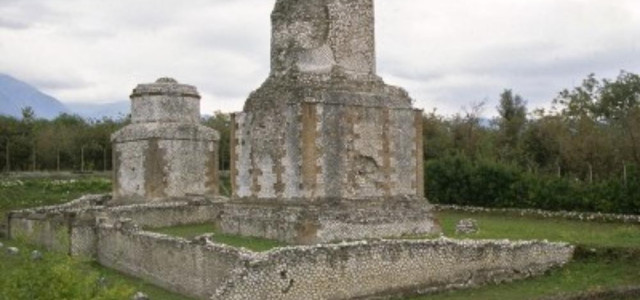Destinazioni - Comune
Avella
Where
Avella (Avellino)
Avella (Latin: Abella; Greek: Ἀβέλλα) is a city and comune in the province of Avellino, in the Campania region of Italy.
Etymology
Could be related to the Indo-European root *h₂ebōl, *h₂ebl (apple), meaning "place where apple-orchards originated" (read below).
History
The ancient Abella was a medium importance center of the Samnites, and then the Romans, about 10 kilometres (6 mi) northeast of Nola. It had a rather large amphitheater, similar to that of Pompeii.
According to Justin, it was a Greek city of Chalcidic origin, which would lead us to suppose that it was a colony of Cumae: but at a later period it had certainly become an Oscan town, as well as the neighboring city of Nola. It must have been at one time a place of importance. Strabo and Pliny both notice it among the inland towns of Campania; and though we learn from the Liber de Coloniis, that Vespasian settled a number of his freedmen and dependants there, yet it appears, both from that treatise and from Pliny, that it had not then attained the rank of a colony, a dignity which we find it enjoying in the time of Trajan. It probably became such in the reign of that emperor.
Virgil and Silius Italicus considered that its territory was not fertile in corn, but rich in fruit-trees (maliferae Abellae): the neighborhood also abounded in filberts or hazelnuts of a very choice quality, which were called from thence nuces Avellanae. By antonomasia, the namesake came to define hazelnuts in general. Still in Spanish, in Portuguese and in Occitan the hazelnut is respectively called avellana, avelã and avelano. That is also the case of ancient Italian avellana, which, however, is not in use anymore.
The modern town of Avella is situated in the plain near the foot of the Apennines; but the remains of the ancient city, still called Avella Vecchia, occupy a hill of considerable height, forming one of the underfalls of the mountains, and command an extensive view of the plain beneath; hence Virgil's expression despectant moenia Abellae. The ruins are described as extensive, including the vestiges of an amphitheatre, a temple, and other edifices, as well as a portion of the ancient walls.
Main sights
Relics of antiquity discovered here include a long inscription in the Oscan language, which records a treaty of alliance between the citizens of Abella and those of Nola. It dates (according to Mommsen) from a period shortly after the Second Punic War, and is not only curious on account of details concerning the municipal magistrates, but is one of the most important auxiliaries we possess for a study of the Oscan language.
Nearby is the Grotto of the Camerelle di Pianura, a Karst grotto. Medieval sights include the church of Santi Martiri Nazario e Celso, built in the 9th to 11th centuries
Transportation
Avella has a station on the Circumvesuviana line Naples Porta Nolana-Baiano.
References
Sources
This article incorporates text from a publication now in the public domain: Bunbury, Edward Herbert (1854). "Abella". In Smith, William. Dictionary of Greek and Roman Geography 1. London: John Murray. pp. 2,3.
External links
Official website
Chisholm, Hugh, ed. (1911). "Avella". Encyclopædia Britannica (11th ed.). Cambridge University Press.



